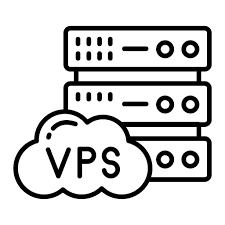How to Choose the Right Cloud Service Provider for Your Business

Strong 8k brings an ultra-HD IPTV experience to your living room and your pocket.
In today’s fast-paced digital landscape, cloud computing has become the backbone of modern business operations. From startups to enterprises, organizations are leveraging cloud services to enhance scalability, reduce costs, and improve operational efficiency. However, with a plethora of cloud service providers (CSPs) available, choosing the right one for your business can be a daunting task. The decision you make today will have long-term implications on your business’s agility, security, and growth potential.
As we approach 2025, the cloud computing industry continues to evolve rapidly, with advancements in artificial intelligence (AI), edge computing, and multi-cloud strategies. This blog will guide you through the key factors to consider when selecting a cloud service provider, ensuring your business stays ahead of the curve.
Key Factors to Consider When Choosing a Cloud Service Provider
1. Service Offerings and Scalability
Relevance: Cloud providers are expanding their portfolios to include AI-driven services, serverless computing, and industry-specific solutions. Ensure your chosen provider offers the services that align with your business needs.
What to Look For:
- Does the provider offer Infrastructure-as-a-Service (IaaS), Platform-as-a-Service (PaaS), and Software-as-a-Service (SaaS)?
- Can the platform scale seamlessly as your business grows?
- Are there advanced services like machine learning, IoT, or blockchain support?
Example: AWS, Microsoft Azure, and Google Cloud are leading the way with innovative offerings like AWS SageMaker, Azure AI, and Google Vertex AI. For a detailed comparison of these providers, check out this comprehensive guide: AWS vs Azure vs Google Cloud: A Comprehensive Comparison.
2. Security and Compliance
Relevance: With increasing cyber threats and stringent data protection regulations, security remains a top priority. By 2025, providers must comply with evolving global standards like GDPR, CCPA, and ISO 27001.
What to Look For:
- Does the provider offer end-to-end encryption and robust identity management?
- Are there built-in compliance certifications for your industry?
- How does the provider handle data breaches and ensure disaster recovery?
Example: Microsoft Azure provides comprehensive compliance coverage, while AWS offers AWS Artifact for compliance reports.
3. Performance and Reliability
Relevance: As businesses rely more on real-time data processing and low-latency applications, performance and uptime are critical.
What to Look For:
- What is the provider’s Service Level Agreement (SLA) for uptime and performance?
- Does the provider have a global network of data centers to ensure low latency?
- Are there guarantees for minimal downtime and quick recovery?
Example: Google Cloud boasts a 99.99% uptime SLA and a global network powered by its private fiber-optic cables.
4. Cost Management and Transparency
Relevance: Cloud costs can spiral out of control without proper management. By 2025, providers are expected to offer more transparent pricing and cost optimization tools.
What to Look For:
- Does the provider offer a pay-as-you-go model or reserved instances?
- Are there tools to monitor and optimize cloud spending?
- How transparent is the pricing structure?
Example: AWS provides AWS Cost Explorer, while Azure offers Azure Cost Management. For strategies on optimizing cloud costs, read this insightful article: How to Optimize Cloud Costs in 2025.
5. Integration and Interoperability
Relevance: Businesses are increasingly adopting multi-cloud and hybrid cloud strategies. Your provider should support seamless integration with other platforms and on-premises systems.
What to Look For:
- Does the provider support open APIs and standard protocols?
- Can it integrate with your existing tools and applications?
- Does it offer hybrid cloud solutions?
Example: IBM Cloud and Red Hat OpenShift are known for their strong hybrid cloud capabilities.
6. Customer Support and Service Level Agreements (SLAs)
Relevance: As cloud environments become more complex, reliable customer support is essential.
What to Look For:
- What level of support does the provider offer (e.g., 24/7, dedicated account managers)?
- Are there clear SLAs for response times and issue resolution?
- Does the provider offer training and resources for your team?
Example: AWS offers Enterprise Support, while Azure provides Premier Support.
7. Innovation and Future-Readiness
Relevance: The cloud provider should be at the forefront of technological advancements.
What to Look For:
- Does the provider invest in R&D and emerging technologies?
- Are they adopting sustainable practices, such as carbon-neutral data centers?
- Do they offer future-ready solutions like edge computing and 5G integration?
Example: Google Cloud is a leader in sustainability, aiming to run on carbon-free energy by 2030.
8. Vendor Lock-In Risks
Relevance: Avoiding vendor lock-in is crucial for maintaining flexibility and control over your IT infrastructure.
What to Look For:
- Does the provider use proprietary technologies that could lead to lock-in?
- Can you easily migrate your data and applications to another provider if needed?
- Does the provider support open-source solutions?
Example: Multi-cloud strategies using Kubernetes and Docker can mitigate lock-in risks.
Emerging Trends to Watch
AI and Machine Learning Integration: Cloud providers are embedding AI/ML capabilities into their platforms, enabling businesses to leverage predictive analytics and automation.
Edge Computing: With the rise of IoT and 5G, edge computing is becoming a critical component of cloud strategies.
Quantum Computing: While still in its infancy, quantum computing is expected to revolutionize cloud services by 2025.
Sustainability: Providers are focusing on green cloud initiatives to reduce carbon footprints.
Conclusion
Choosing the right cloud service provider is a strategic decision that requires careful consideration of your business needs, growth plans, and industry trends. By evaluating factors such as service offerings, security, performance, cost, and future-readiness, you can select a provider that aligns with your goals and positions your business for success in 2025 and beyond.
As the cloud landscape continues to evolve, staying informed and adaptable will be key to maximizing the benefits of cloud computing. Whether you opt for AWS, Azure, Google Cloud, or a niche provider, ensure your choice empowers your business to thrive in the digital age.
Note: IndiBlogHub features both user-submitted and editorial content. We do not verify third-party contributions. Read our Disclaimer and Privacy Policyfor details.







